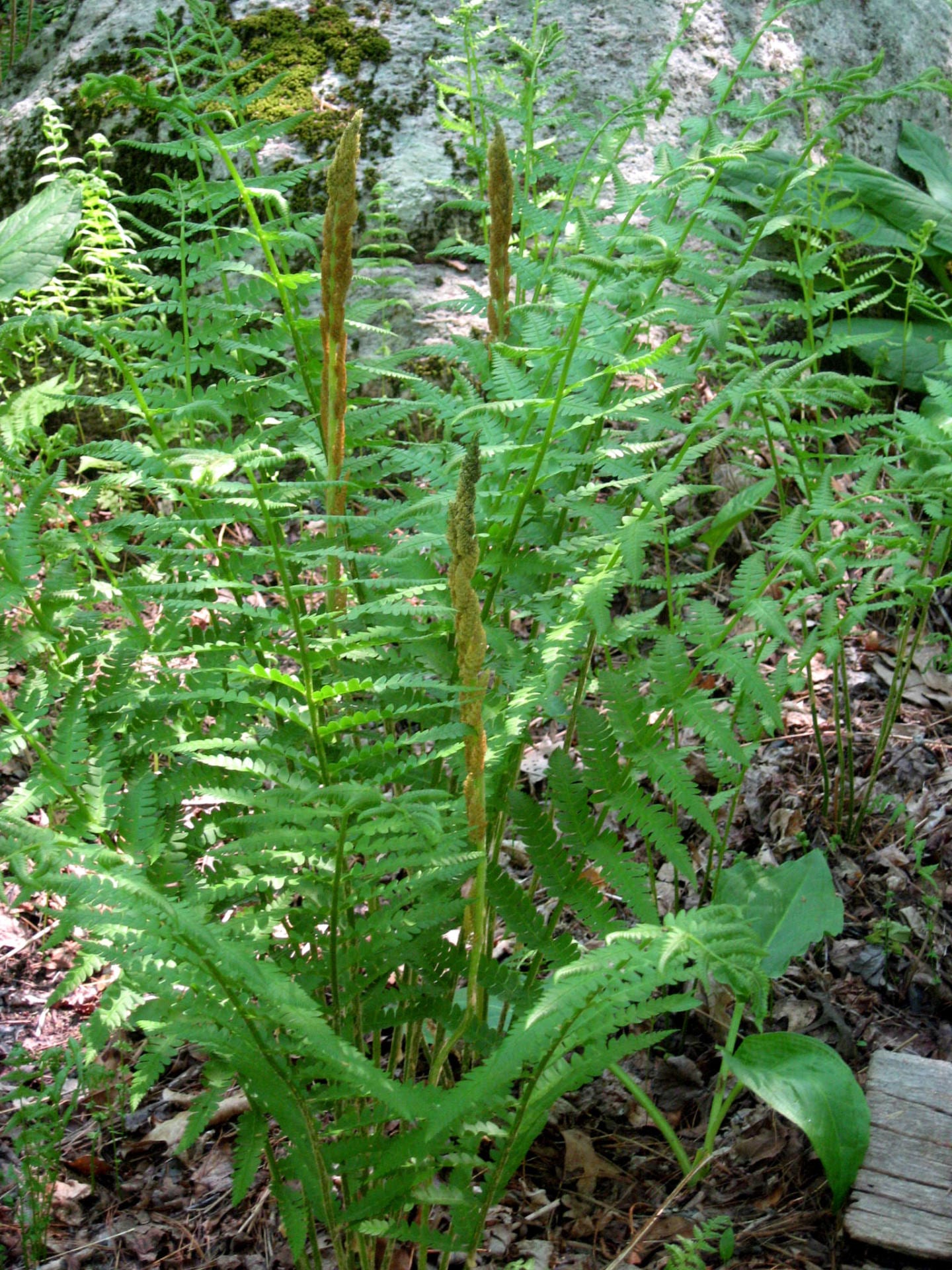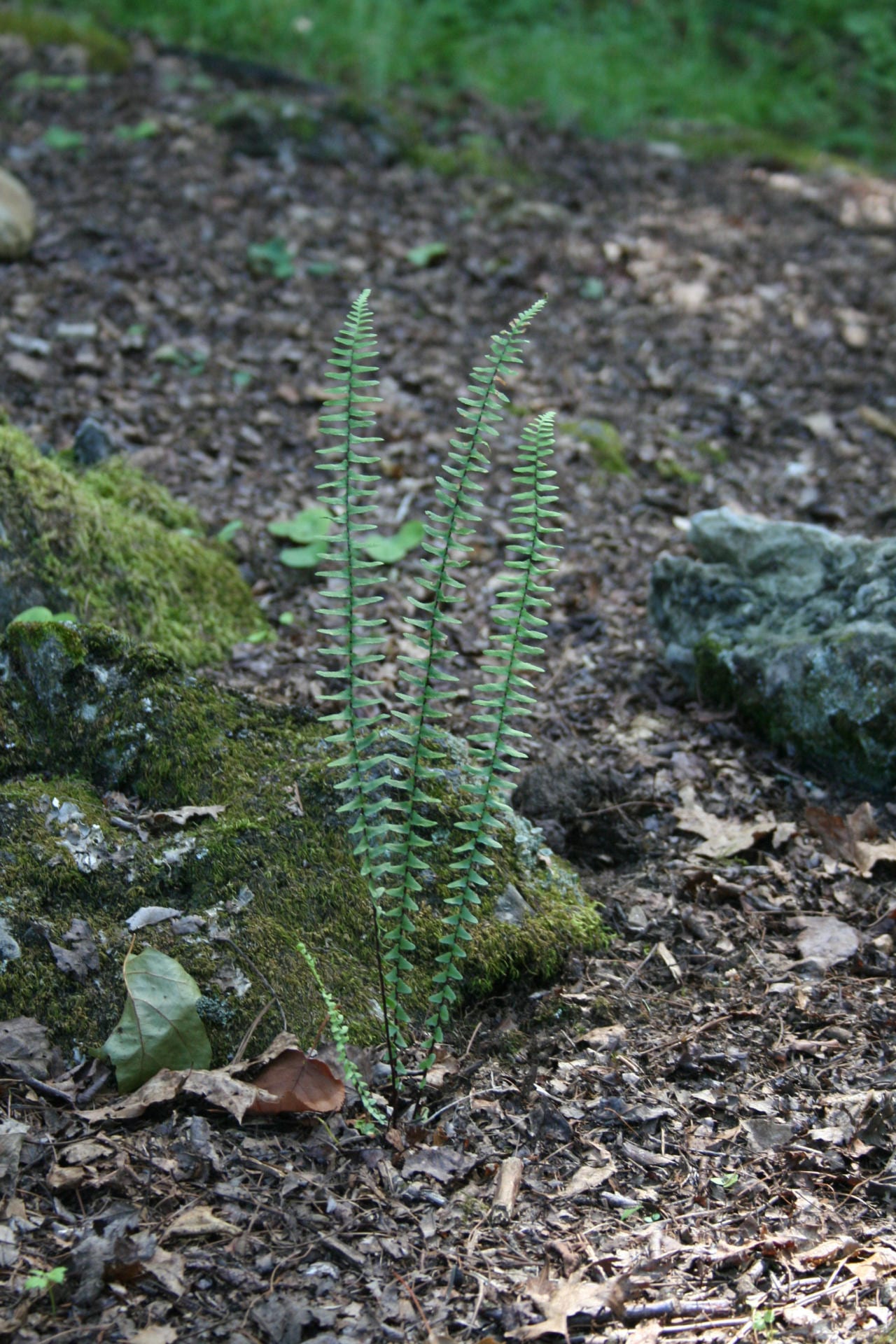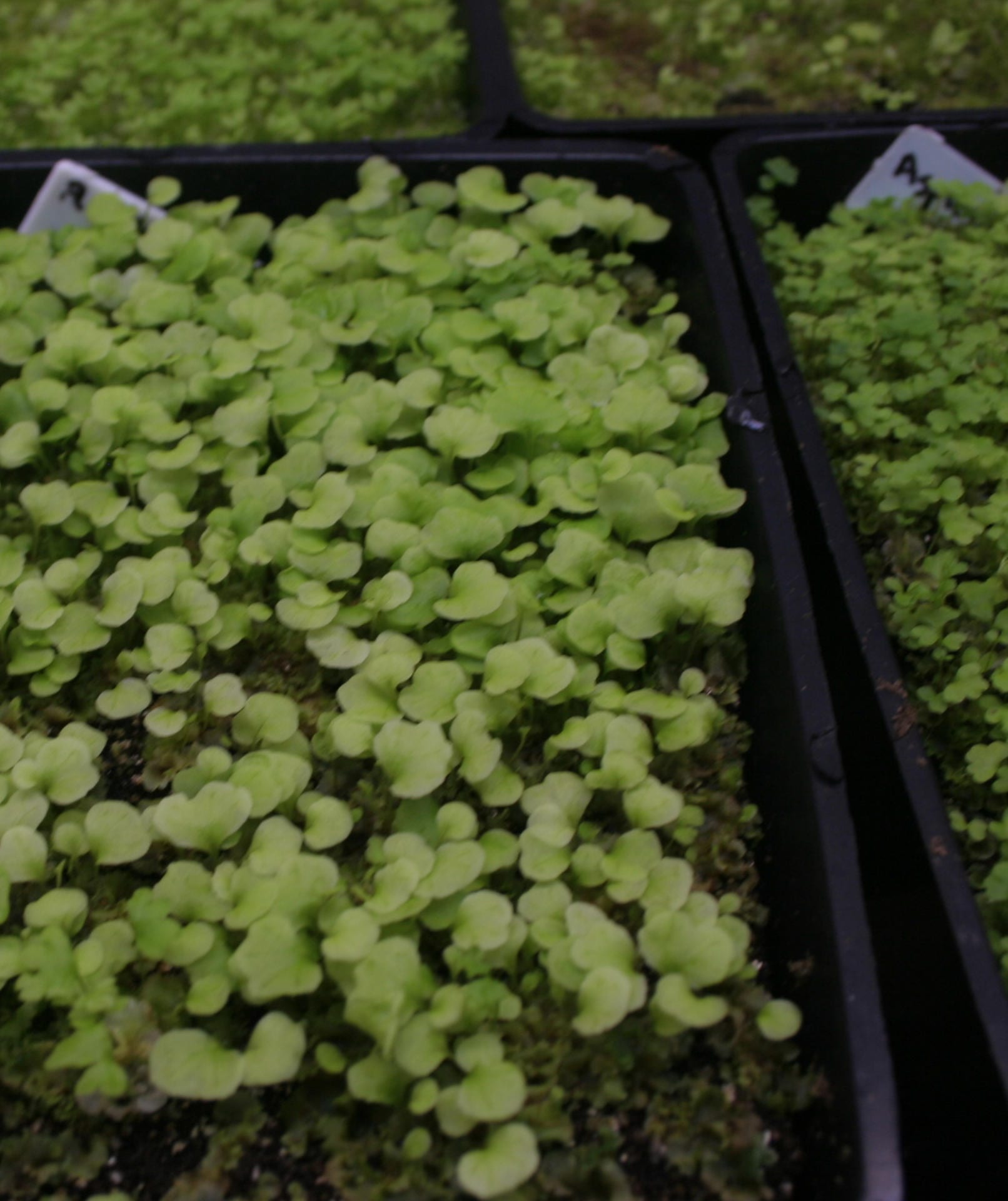by Leslie Duthie
Ferns are mysterious – they are things of lore and fantasy. Ferns bear no flower and no fruit. They are ancient, having evolved over 200 million years before flowering plants (angiosperms). Lore tells us that people believed that ferns flowered only once a year – on the summer solstice, at midnight. Finding a fern flower would endow the seeker with happiness, love or riches – depending on what fable you read. The spores were called “fairy dust.”
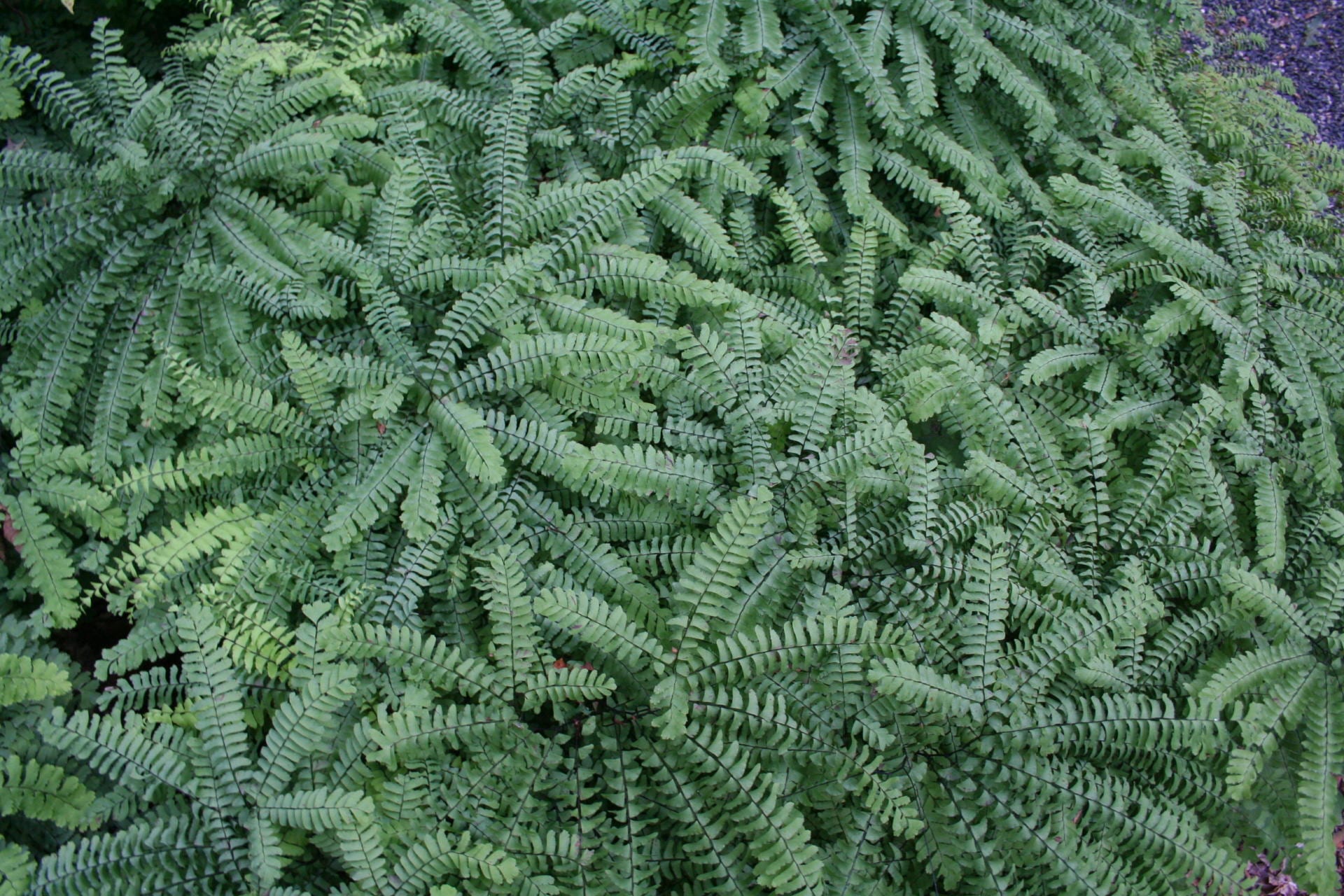
As an ancient plant, ferns like Adiantum pedatum (maidenhair fern) have been the subject of mystery and lore throughout the centuries.
In the mid 1800s, ferns became all the rage. Couples would go out on “fern forays” to find and collect unusual specimens. Enthusiasts constructed terrariums, or Wardian cases, so they could bring ferns back to their polluted cities and keep their ferns safe within their own glass cases, allowing them to thrive away from the soot filled air. Today, in contrast, we have trouble deciding how ferns fit into our ecosystem and why they are important.
The Ecologically Important Fern
Ferns are an important part of our flora. Our woodlands, rocky outcrops, meadows and fields contain a wide array of plants – some of which are ferns. I was recently asked, “What is the ecological value of ferns?” Hmmm…I had some trouble answering the question, but the obvious struck me: they are part of our flora. They belong here; why would we, as gardeners, designers, and landscape architects, just completely ignore one whole group of plants? Ferns are part of the ecosystem. Their immediate value may not be recognizable, but they evolved with our flora; they serve a purpose in the landscape.
- Ferns are a place of rest for insects, amphibians, and our eyes. Although their role in the ecosystem may not be as blatant as that of a bee balm, they still serve an important purpose. When flowers are abuzz with activity or seeds are providing important food for insects and birds, how about a plant to get away from it all? We all need a place to rest – perhaps ferns offer shelter, a resting place, a place away from the hub of activity.
- Ferns are tolerant of a wide range of conditions from full sun to deep, impenetrable shade. Ferns even grow inside of caves. Ferns are not challenged by variability in soil, moisture, and sun exposures. They play a critical role in filtering water with their extensive (and sometimes large and fibrous) root systems. Do not think of ferns as being “delicate” or ”fragile”; like many of our native perennials, they tolerate a wide range of conditions. Ferns definitely like a little more humus, but most will tolerate regular garden loam.
- There ARE wildlife species that use ferns. Small songbirds collect the fuzz found on the stems of Osmundastrum cinnamomeum (cinnamon fern) to line their nests. There are species of leaf miners that rely on ferns for a suitable meal. Certain species of spiders roll the tips of fronds to create a safe place to lay their eggs and raise their young.
- What would a woodland walk be without ferns? Perhaps we spend too much time focusing on flowers and forget the important role foliage plays in the ecosystem, especially in terms of food for species such as the marsh fern moth (Fagitana litera) larva. Ferns definitely have a place in our gardens.
Design with Ferns
In addition to their ecological importance, ferns have great design value. Some species are fine textured like Athyrium angustum (lady fern). Wood fern, Goldie’s fern, log fern, and Clinton’s wood fern (all Dryopteris species) are large, coarse ferns that are good for background planting or areas of shade where they will fill in to create a lovely glade of deep green foliage. Osmundastrum cinnamomeum (cinnamon fern), Osmunda regalis (royal fern), and Onoclea sensibilis (sensitive fern) all produce separate fertile fronds which provide color and interest in the garden even through the winter. Athyrium angustum ‘Lady in Red’ (red stemmed lady fern) has gorgeous deep maroon stalks that can be offset by white and maroon flowers in the garden. Adiantum pedatum (maidenhair fern) has such beautiful growth form and deep black stalks that it is a must-have for almost any garden, and it will thrive in light shade to full deep shade.
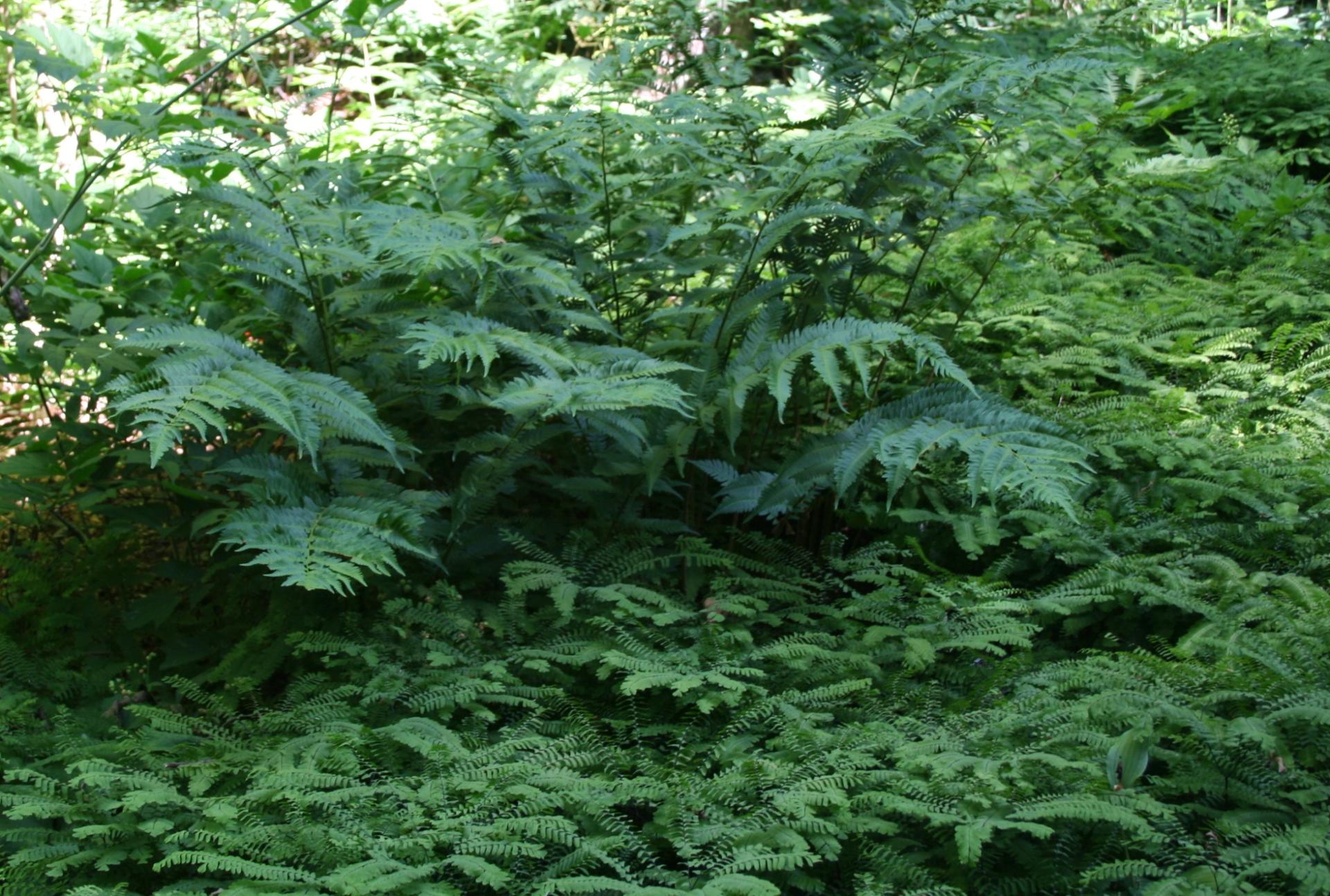
Ferns layer beautifully in the landscape. Here Adiantum pedatum (maidenhair fern) flourishes below tall fronds of Dryopteris goldiana (Goldie’s fern).
We need to have a better appreciation for ferns. When you come across a species look at its merits, look at its flaws, imagine it in a garden setting. Look at how Onoclea sensibilis (sensitive fern) invades an open, wet meadow. Look at the dark green luster of Dryopteris marginalis (marginal wood fern), or D. intermedia (evergreen wood fern) in the woodlands and imagine their uses in our garden. Deparia acrostichoides (silvery glade fern) has soft green, tall foliage and is a fine textured fern that spreads slowly. It is vase-shaped and gets its name from the silvery hairs that cover the frond. Polystichum acrostichoides (Christmas fern) does well in deep shade, and the fronds remain green throughout the winter making it a plant with some winter interest. Smaller ferns like Asplenium platyneuron and A. trichomanes (ebony or maidenhair spleenwort) are nice rock garden species in the shade and Pellaea atropurpurea (purple cliffbrake) is outstanding in the sunny rock crevices. We have so many choices and so many species to fit unique niches.
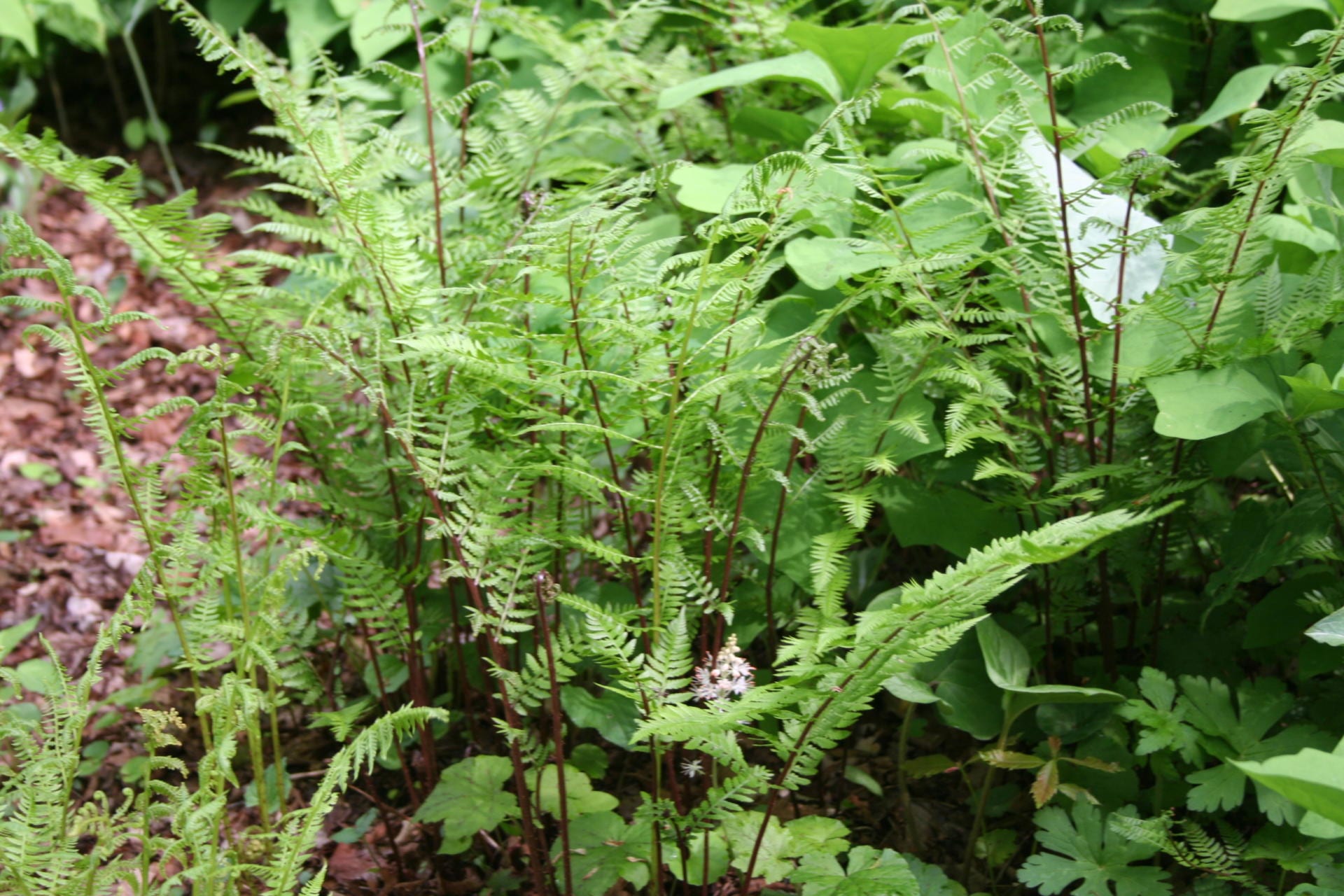
Athyrium angustum (red-stem lady fern) shares space with tiarella and Geranium maculatum (front) and Jeffersonia diphylla (twinleaf) (back).
Sourcing Your Own Ferns
In Your Own Gardens
Ferns reproduce by spore. The spore is borne in sori on the underside of the leaf or frond. Some ferns are dimorphic, meaning that they have two forms of fronds – fertile and vegetative. Spores remain viable for long periods of time, and I have actually seen evidence of spores germinating in the wild – usually in moss along the edge of a stream. Ferns also reproduce vegetatively by the rhizome (or horizontal stem) that runs just under the soil surface and periodically sends up new crowns or new fronds. Ferns can be divided vegetatively throughout the year, but I prefer to divide them in spring before the fiddleheads unfurl. If you must divide and transplant during the growing season most ferns will send out new fronds, so don’t worry if you break a few while moving the plant. New transplants like a little extra TLC – primarily additional watering to help them become established. Never dig ferns from the wild.
From Nurseries
Some ferns are available in the nursery trade. There are about a dozen species that are commonly available or at least easy to find at a nursery. But is that all we have? Twelve ferns in our northeastern flora? Of course not. Although there are some enticing non-native ferns like the Japanese painted fern or the autumn fern, we have over 76 of species that grow in New England according to The Native Plant Trusts’ Go Botany plant identification tool.
By Propagation
Also, it is possible to grow ferns from spore yourself. Just as some people believe ferns are “fussy” or “challenging” to use in a garden, most believe that growing ferns from spore is impossible. Not true. But it does take patience, time, and a clean environment. Collect spores in summer as the sori ripen; collect an entire frond and lay it between sheets of newspaper. In a few days, the spores drop right out and make a brownish “spore print” on the paper. Spores do not need special care in storage, simply place the spores in a cellophane envelope for later.
Use a clean flat, a fresh bag of propagating mix, and a clean location for the spore to germinate. Artificial light – either LED or fluorescent – is sufficient. Sow the spores by lightly sprinkling them over the surface of wet medium and place under glass in the artificial light. Full sun is too intense for ferns. It takes approximately 4 to 6 weeks for the spore to germinate to the gametophyte stage. This is when ferns go through sexual reproduction, so a humid environment is critical at this stage. Sporophytes, or true ferns emerge in another three to six weeks and young ferns can be transplanted into cell packs. Be sure to use a clean and well-drained mix for transplants, typically propagating mix and additional perlite.
Of course, all of the above can be scrapped, and you can germinate spores in clean containers from the grocery store. Cupcake or muffin containers allow for sowing up to six different species at once! Be sure the containers are clean and poke holes in the bottom of the “cupcake” for drainage.
Ferns from spore take approximately one to two years to become garden ready. Smaller species reach maturity more quickly and can be planted about one year after sowing the spore. Larger wood ferns may take two years to be ready for the garden. It is possible to start ferns at any time of the year; the spore do not need any stratification.
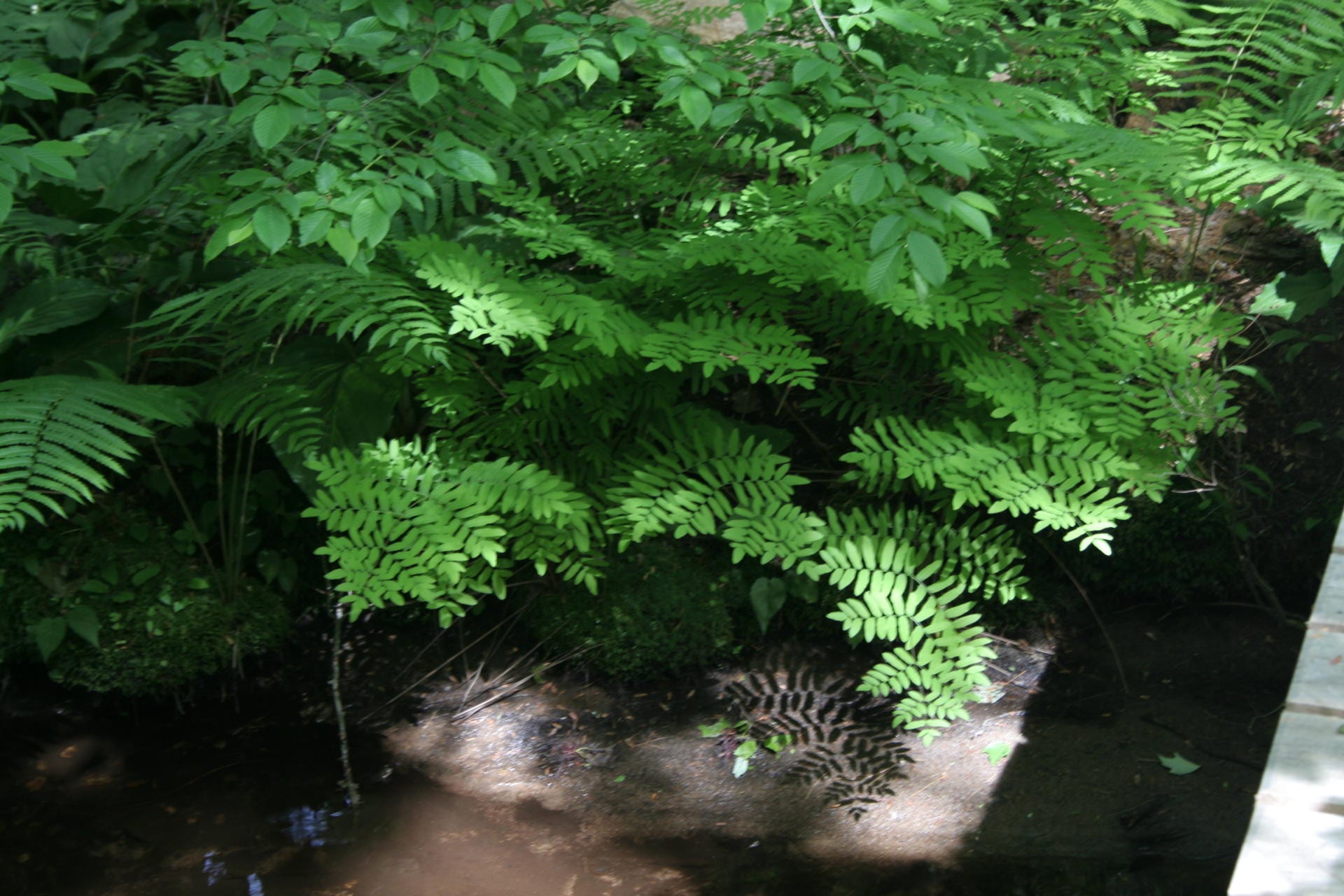
Osmunda regalis (royal fern) brightens a dark spot in the garden, and features shadow play when struck by light.
Ferns are adaptable, tolerant, useful. They are part of our flora and have a place in our gardens. With so many choices, it is up to us to learn about the different species and to start asking our suppliers to provide these beautiful treasures. Ferns have been on our landscape for much longer than their flowering cousins. They are unique and beautiful while providing tremendous ecological value in our gardens.
About the Author
Leslie Duthie is a lifelong gardener. She was formerly employed at the Norcross Wildlife Sanctuary where she was the horticulturist and plant propagator for over 38 years. An accomplished grower of ferns and wildflowers, Leslie’s love of ferns began when she first learned how to raise them from spore. Now retired, she continues to volunteer at various gardens and works to protect land for her local Conservation Commission and land trust.
***
Each author appearing herein retains original copyright. Right to reproduce or disseminate all material herein, including to Columbia University Library’s CAUSEWAY Project, is otherwise reserved by ELA. Please contact ELA for permission to reprint.
Mention of products is not intended to constitute endorsement. Opinions expressed in this newsletter article do not necessarily represent those of ELA’s directors, staff, or members.

